Address
304 North Cardinal
St. Dorchester Center, MA 02124
Work Hours
Monday to Friday: 7AM - 7PM
Weekend: 10AM - 5PM
Address
304 North Cardinal
St. Dorchester Center, MA 02124
Work Hours
Monday to Friday: 7AM - 7PM
Weekend: 10AM - 5PM
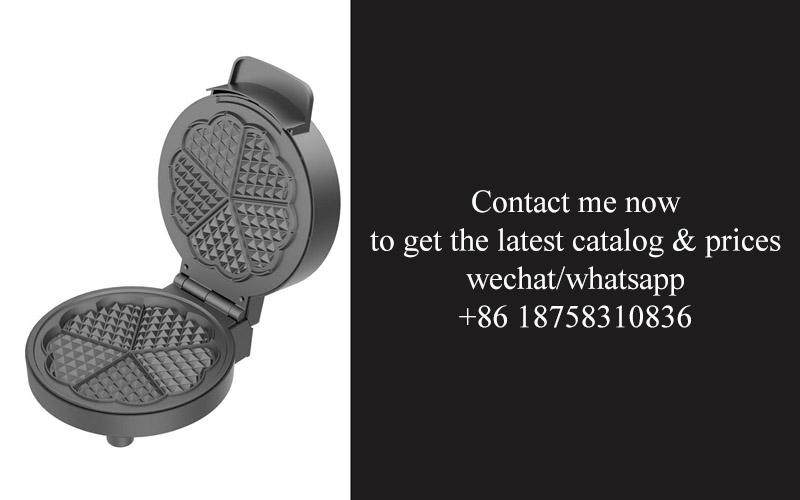
In the ever-evolving landscape of kitchen appliance retail, private label offerings have quietly transformed the market. As consumers seek quality products at competitive prices, these brands have carved out a niche that challenges the dominance of established names. Today, we delve into the intricacies of private label kitchen appliance packaging, exploring its role in shaping consumer perception and brand loyalty, while also examining the sustainability trends and the delicate balance between functionality and aesthetics. This exploration will culminate in a look at case studies of successful private label packaging and insights into the future trends and predictions for this dynamic sector.
In recent years, the kitchen appliance industry has undergone a remarkable transformation, with private label brands emerging as a significant force. These brands, often known as store brands or own-label products, are gaining traction among consumers, reshaping the competitive landscape of the market. Let’s delve into why private label kitchen appliances are becoming a game-changer.
Private label brands are not new to the retail world, but their surge in popularity is a testament to the evolving consumer preferences and the changing dynamics of the market. These brands offer a unique blend of affordability, quality, and innovation, which is resonating with budget-conscious shoppers and those seeking alternatives to established names.
One of the primary reasons for the rise of private label kitchen appliances is the cost-effectiveness they provide. Consumers are increasingly looking for value-for-money options, and private label brands are stepping in to fill this gap. By cutting out the middleman and selling directly to customers, these brands can offer appliances at significantly lower prices without compromising on quality. This affordability has made private label appliances an attractive choice for those who want to outfit their kitchens without breaking the bank.
Moreover, private label brands are not just about price; they are also known for their innovation. Many of these brands are at the forefront of introducing new technologies and designs into the market. Whether it’s smart kitchen appliances that connect to home automation systems or eco-friendly models that promote sustainability, private label brands are constantly pushing the boundaries of what’s possible in kitchen technology.
The quality of private label kitchen appliances has also improved dramatically. Initially, consumers had reservations about the durability and reliability of store brands, but that perception is changing. Today, many private label appliances are built to the same high standards as their branded counterparts, often with similar components and manufacturing processes. This shift in quality perception has opened up a new market segment for private label brands.
Retailers are also playing a crucial role in the rise of private label kitchen appliances. By offering their own brands, retailers can differentiate themselves from competitors and provide a unique value proposition to their customers. This vertical integration allows retailers to have more control over their product offerings and the customer experience, fostering brand loyalty and customer retention.
Another factor contributing to the growth of private label kitchen appliances is the changing demographics of consumers. Millennials, in particular, are more open to trying new brands and are less brand-loyal than previous generations. This demographic shift has created a fertile ground for private label brands to gain market share.
The packaging of private label kitchen appliances is another area where innovation is flourishing. Brands are investing in eco-friendly materials and sustainable packaging solutions to appeal to environmentally conscious consumers. This focus on sustainability not only aligns with the values of many customers but also helps private label brands stand out in a crowded market.
In terms of design, private label brands are increasingly focusing on aesthetics. The packaging of these appliances is becoming more visually appealing, with sleek designs and attention to detail. This approach not only enhances the consumer’s first impression but also positions private label appliances as a viable alternative to high-end brands.
The rise of private label kitchen appliances is not just a trend; it’s a strategic shift in how consumers approach kitchen technology. As these brands continue to innovate and improve, they are not only challenging established players but also raising the bar for the entire industry.
In conclusion, the rise of private label kitchen appliances is a multifaceted phenomenon driven by affordability, innovation, quality, and consumer preferences. As these brands continue to evolve, they are set to play an even more significant role in the kitchen appliance market, offering consumers a diverse range of options that cater to their needs and values.

Private label kitchen appliances have become a significant force in the market, reshaping consumer expectations and brand dynamics. This movement, often overshadowed by the allure of big-name brands, holds a unique place in the hearts of budget-conscious shoppers and forward-thinking manufacturers alike.
Shoppers are increasingly turning to private label options for their kitchen appliances. The appeal lies in the combination of affordability and quality that these products offer. Unlike name brands, which often come with a premium price tag, private label appliances provide a cost-effective alternative without compromising on performance. This affordability factor is particularly attractive in today’s economic climate, where consumers are looking for value in every purchase.
For brands, the emergence of private label kitchen appliances presents both challenges and opportunities. On one hand, the competition from these alternative brands can be fierce, particularly in the price-sensitive appliance market. However, it also opens up a new revenue stream and allows established brands to tap into markets they might not have previously considered. This dual nature of private label appliances has brands rethinking their strategies and diversifying their product lines.
The shift towards private label appliances has also influenced the way consumers perceive value. No longer do customers solely equate high prices with high quality. Instead, they are more likely to base their purchases on a combination of factors, including price, brand reputation, and the overall product experience. This shift in consumer mindset has encouraged both private label and established brands to focus on innovation and customer satisfaction.
Private label kitchen appliances often come with a unique selling proposition that resonates with consumers. For example, they might be designed with specific features that cater to the needs of a particular demographic, such as eco-friendly materials or energy-efficient technologies. This targeted approach to product development ensures that private label appliances address specific consumer pain points, making them a compelling alternative to off-the-shelf products.
Brands that embrace the private label trend are not just competing on price; they are also engaging in a battle for brand loyalty. To stand out in this competitive landscape, manufacturers must focus on building a strong brand identity for their private label products. This involves creating packaging that not only reflects the product’s quality but also communicates the brand’s values and mission.
The packaging of private label kitchen appliances plays a crucial role in shaping consumer perception. A well-designed package can make a significant difference in how customers view the product. For instance, packaging that emphasizes eco-friendliness can appeal to environmentally conscious consumers, while sleek, modern designs can attract those looking for a stylish kitchen upgrade.
From a brand perspective, private label offers the opportunity to experiment with different marketing strategies. It allows manufacturers to test new ideas and innovations without the risk of major financial investment. If a particular private label product takes off, it can be scaled up and potentially become a standalone brand within the company’s portfolio.
In terms of supply chain management, private label appliances present a unique challenge. Brands must navigate complex supply chains to ensure that they can offer competitive pricing without compromising on quality. This often involves establishing partnerships with reliable suppliers and manufacturers who can produce high-quality products at a reasonable cost.
The rise of private label kitchen appliances has also had an impact on the retail landscape. Supermarkets, department stores, and online retailers are all increasingly offering private label appliance lines. This shift is driven by the demand for affordable, high-quality products and the opportunity for retailers to add value to their offerings.
In conclusion, private label kitchen appliances have become a powerful force in the market, influencing consumer behavior and brand strategy. For consumers, they offer a cost-effective and sometimes even superior alternative to name brands. For brands, they present an opportunity to diversify their product lines and engage with a new set of customers. As the private label trend continues to grow, both consumers and brands can expect to see further innovation and competition in this dynamic segment of the appliance market.

Private label kitchen appliances have become a significant force in the market, offering consumers a variety of benefits that traditional branded appliances may not. The packaging of these private label products plays a crucial role in their appeal and success. Here’s a look at some innovative packaging solutions that are reshaping the landscape of private label kitchen appliances.
Packaging that Emphasizes FunctionalityOne of the key aspects of private label kitchen appliance packaging is its focus on functionality. Designers are creating packaging that not only protects the product during shipping and storage but also makes it easier for consumers to use and dispose of. Features like easy-to-open tabs, clear instructions, and intuitive designs are becoming standard, ensuring that customers have a seamless experience from the moment they see the product on the shelf.
Eco-Friendly and Sustainable MaterialsIn an era where sustainability is more important than ever, private label brands are turning to eco-friendly packaging materials. This shift is not just a marketing tactic; it’s a genuine commitment to reducing the environmental impact. From biodegradable plastics to recycled paper and cardboard, these materials are not only better for the planet but also resonate with environmentally conscious consumers.
Interactive and Digital PackagingThe digital age has brought new possibilities to packaging design. Private label kitchen appliance brands are integrating interactive elements into their packaging, such as QR codes that link to tutorials, recipes, or customer reviews. This not only provides added value but also encourages customer engagement and brand loyalty. Digital packaging can also be used to track product information and warranties, offering a transparent and convenient experience.
Customizable and Modular PackagingTo cater to a diverse range of customers, private label brands are embracing customizable and modular packaging. This approach allows consumers to choose the right size and configuration for their needs, reducing waste and increasing satisfaction. For example, a blender might come in a variety of jar sizes, or a set of kitchen knives could be sold with a modular packaging system that allows users to mix and match handles and blades.
Aesthetics and BrandingWhile functionality is paramount, aesthetics and branding are also critical in packaging. Private label brands are investing in designs that stand out on the shelf and reflect the brand’s image. Bold colors, unique shapes, and eye-catching graphics are being used to create a memorable first impression. Additionally, the branding on the packaging is becoming more sophisticated, with a focus on storytelling and conveying the brand’s values and heritage.
Security and Anti-Piracy MeasuresWith the rise of counterfeit products, security in packaging is a growing concern. Private label brands are implementing advanced security measures, such as holographic stickers, serial numbers, and tamper-evident seals. These features not only protect the brand’s reputation but also ensure that consumers receive genuine products.
Accessibility and InclusivityInclusivity is a key consideration in modern packaging design. Private label brands are making their products and packaging more accessible to people with disabilities. This includes clear labeling, tactile elements for those with visual impairments, and packaging that is easy to open and handle. By focusing on inclusivity, these brands are not only expanding their customer base but also setting a positive example in the industry.
Packaging as an Extension of the Product ExperienceFinally, packaging is increasingly being seen as an extension of the product experience. Private label brands are designing packaging that not only protects the appliance but also enhances the overall consumer journey. This could mean including a gift box for a kitchen appliance that’s intended as a gift, or packaging that doubles as a storage solution or display unit once the product is removed.
In summary, the packaging of private label kitchen appliances is evolving to meet the changing needs of consumers and the competitive landscape of the market. By focusing on functionality, sustainability, innovation, and brand identity, these brands are creating packaging solutions that not only protect their products but also build customer trust and loyalty.
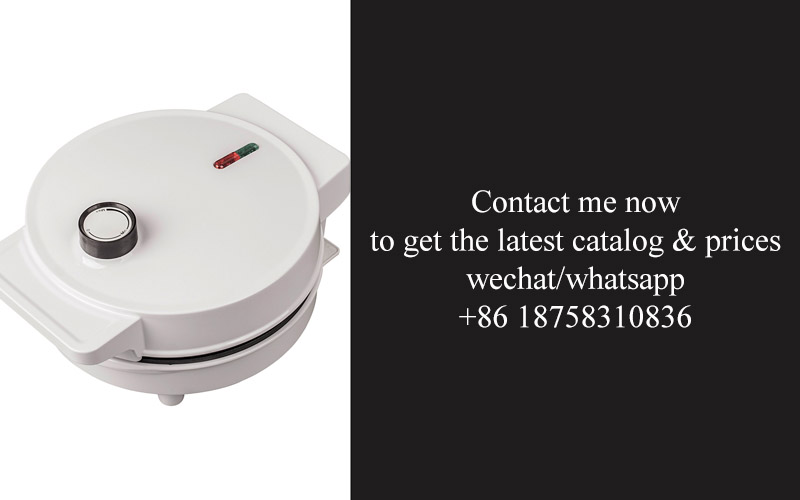
In today’s highly competitive kitchen appliance market, the role of packaging extends far beyond mere protection and convenience. It plays a pivotal role in shaping consumer perception and fostering brand loyalty. Here’s a closer look at how packaging can make or break a brand’s image and customer loyalty.
Packaging that tells a story
The design and materials used in packaging can convey a brand’s values and story. A sleek, minimalist design might suggest modernity and sophistication, while a rustic, earthy look could evoke a sense of tradition and craftsmanship. By aligning the packaging aesthetics with the brand’s identity, companies can create an emotional connection with consumers, making the product more memorable and desirable.
Aesthetics and usability
Aesthetically pleasing packaging can draw in consumers at first glance. However, the real test comes when the product is unpacked. Packaging that is both visually appealing and user-friendly can enhance the consumer’s experience, from unboxing to long-term use. For instance, kitchen appliances with packaging that allows for easy assembly or storage can leave a lasting positive impression.
Sustainability as a selling point
With growing environmental concerns, sustainable packaging has become a significant factor in consumer choices. Brands that prioritize eco-friendly materials and practices in their packaging can attract environmentally conscious consumers. This not only promotes brand loyalty but also positions the company as a responsible corporate citizen, fostering a positive brand image.
The role of information
Packaging serves as a platform for providing essential information about the product. Clear and concise instructions, warranty details, and safety warnings can build trust and ensure that consumers feel confident in their purchase. Additionally, highlighting product features and benefits can reinforce the value proposition, making the product more appealing and memorable.
Packaging and brand perception
The way a product is packaged can significantly influence how consumers perceive the brand. High-quality, durable packaging can suggest that the product is of premium quality, while poor packaging might raise questions about the brand’s commitment to quality. This perception can translate into consumer expectations and ultimately affect brand loyalty.
Packaging and brand differentiation
In a crowded market, packaging can be a key differentiator. Unique packaging designs or innovative uses of materials can make a brand stand out and be easily recognizable. This differentiation can lead to increased brand awareness and, subsequently, brand loyalty, as consumers develop a preference for the brand over competitors.
The psychological effect of packaging
Packaging can evoke emotions and memories, which can be powerful tools in influencing consumer behavior. For example, vibrant colors and playful designs might appeal to a younger demographic, while a more classic, muted palette could resonate with an older audience. This emotional connection can make consumers feel a personal attachment to the brand, driving loyalty and repeat purchases.
Packaging and the unboxing experience
The unboxing experience has become a significant aspect of consumer satisfaction. Packaging that is designed to create a sense of anticipation and excitement can enhance the overall product experience. This positive emotional response can reinforce brand loyalty, as consumers are more likely to share their positive experience with others, thereby increasing brand visibility and appeal.
Packaging and long-term customer relationships
Ultimately, packaging is a reflection of a brand’s commitment to its customers. High-quality, thoughtfully designed packaging can contribute to building long-term relationships with consumers. By consistently delivering on the promise of quality and convenience, brands can establish a loyal customer base that looks forward to future purchases and recommends the brand to others.
In conclusion, the impact of packaging on consumer perception and brand loyalty is undeniable. It is a multifaceted tool that can enhance brand image, differentiate products in the market, and foster a sense of loyalty and trust among consumers. As brands continue to innovate and adapt to changing consumer expectations, the role of packaging will only become more critical in shaping the future of the kitchen appliance industry.
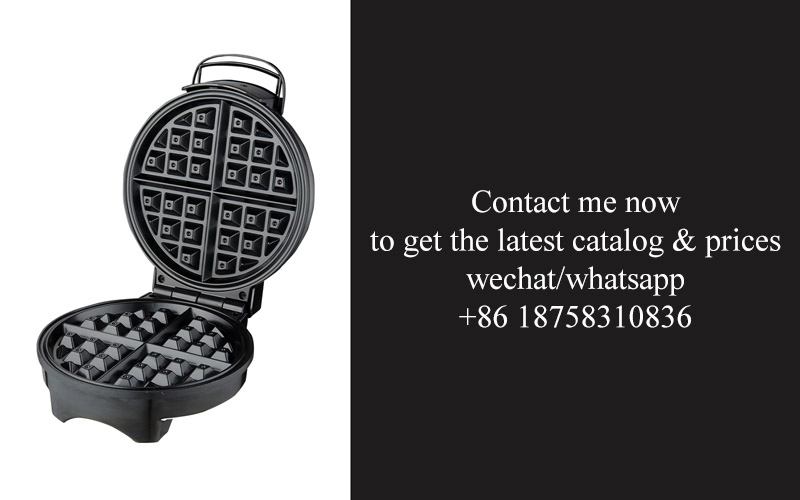
In today’s conscious consumer landscape, sustainability and eco-friendliness have become more than just buzzwords; they’re core values shaping the way products are designed, manufactured, and packaged. For private label kitchen appliances, the shift towards sustainability is profound, reflecting a broader industry trend that resonates with environmentally conscious shoppers. Here’s a closer look at the eco-friendly trends reshaping private label packaging.
Packaging that tells a story. Brands are increasingly using packaging to communicate their commitment to sustainability. From recycled materials to labels that detail the appliance’s lifecycle, the packaging itself becomes a testament to the brand’s values. For private label appliances, this storytelling approach not only educates consumers but also fosters a deeper connection with the product.
Minimalism meets functionality. Eco-conscious consumers are gravitating towards packaging that is not only sustainable but also efficient. Private label brands are embracing minimalist designs that reduce material waste without compromising on the essential protective features. This means fewer materials, less weight, and a smaller carbon footprint, all while ensuring the appliance reaches the consumer in perfect condition.
Recycled and renewable materials. The heart of eco-friendly packaging lies in the materials used. Private label brands are turning to recycled plastics, paper, and even biodegradable materials like cornstarch or sugarcane. These alternatives not only reduce the demand for new resources but also help in diverting waste from landfills. The challenge lies in ensuring these materials maintain the same durability and protective qualities as traditional packaging.
Energy-efficient production. The process of creating packaging is as important as the materials themselves. Brands are investing in energy-efficient production methods, such as solar-powered facilities or wind turbines, to reduce the carbon footprint associated with packaging production. This not only makes the packaging more sustainable but also sets a positive example for the entire supply chain.
Water conservation. Packaging that requires less water to produce is another key trend. By optimizing the manufacturing process to minimize water usage, private label brands are not only reducing their environmental impact but also contributing to water conservation efforts. This is particularly significant in regions where water scarcity is a pressing issue.
Carbon footprint reduction. Companies are taking a holistic approach to reducing the carbon footprint of their packaging. This includes sourcing materials locally to minimize transportation emissions, choosing lightweight packaging to reduce fuel consumption, and even developing packaging that can be composted or recycled at the end of its life cycle.
Consumer engagement through packaging. Eco-friendly packaging is not just about the materials; it’s also about engaging consumers in the sustainability journey. Private label brands are incorporating QR codes and AR experiences that allow consumers to learn more about the product’s environmental impact and how they can contribute to a greener future.
Longevity and upcycling. Packaging that is designed to last longer or can be repurposed is becoming more common. Brands are exploring ways to make their packaging durable enough to be used multiple times, or to be transformed into something useful after the appliance has served its purpose. This not only reduces waste but also encourages a circular economy approach.
Certifications and transparency. As consumers demand more information about the products they purchase, private label brands are responding with certifications from recognized sustainability organizations. This transparency builds trust and allows consumers to make informed choices based on the brand’s commitment to the environment.
In conclusion, the trends in sustainability and eco-friendly packaging for private label kitchen appliances are multifaceted. They encompass not just the materials and production methods but also the way brands engage with consumers and the message they convey about their values. As the market continues to evolve, it’s clear that sustainability is no longer just a trend—it’s a fundamental aspect of how we do business and live our lives.
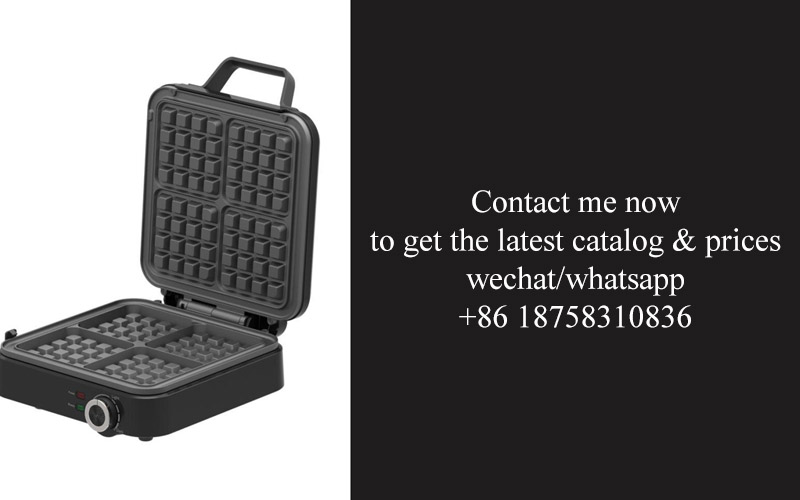
In the world of private label kitchen appliances, the packaging plays a pivotal role in shaping consumer perception and fostering brand loyalty. The interplay between functionality and aesthetics in packaging design is a delicate balance that can make or break a product’s market appeal.
Packaging serves as the first physical interaction a consumer has with a product. A well-designed box or container can immediately capture attention and spark curiosity. The use of vibrant colors, sleek fonts, and eye-catching graphics can evoke a sense of quality and innovation. Conversely, a lackluster design might lead to a perceived lack of value or interest in the product inside.
The functionality of packaging is equally important. It must protect the kitchen appliance during shipping and storage, ensuring that it arrives in perfect condition. Features like bubble wrap, sturdy boxes, and protective corners are essential to safeguard delicate components. But functionality doesn’t stop there; it extends to the ease of use. A product that is difficult to open or requires multiple tools to access can leave a negative impression, regardless of its design.
Incorporating sustainable materials into packaging design has become a significant trend. Consumers are increasingly conscious of their environmental footprint and are more likely to support brands that demonstrate a commitment to sustainability. Eco-friendly packaging options like recycled paper, biodegradable plastics, and compostable materials not only align with these values but also enhance the product’s overall appeal. A brand that uses sustainable packaging can position itself as a leader in responsible consumerism.
Aesthetics, on the other hand, are about creating an emotional connection with the consumer. The look and feel of the packaging can evoke feelings of excitement, trust, or nostalgia. High-quality materials and attention to detail can elevate a product’s perceived value. For instance, a sleek, minimalist design can suggest sophistication and modernity, while a rustic, handcrafted look might evoke a sense of warmth and tradition.
However, balancing functionality and aesthetics isn’t just about appearance; it’s about the entire user experience. A package that looks great but doesn’t open easily or adequately protect the product is a missed opportunity. Similarly, a package that is extremely functional but visually unappealing might deter consumers from purchasing the product.
The design process often involves multiple iterations and collaborations between packaging designers, product developers, and marketing teams. Each stakeholder brings different perspectives and priorities to the table. Designers focus on the visual appeal, product developers on the protection and usability, and marketers on the brand message and consumer perception.
In some cases, technology has stepped in to help bridge the gap between functionality and aesthetics. For example, the use of smart packaging that incorporates digital elements, such as QR codes or augmented reality (AR), can offer a unique blend of information and interactivity. Consumers can scan the packaging to learn more about the product, access tutorials, or even customize their purchase experience.
Brands that excel at this balance often create packaging that is as unique as the product itself. For instance, a high-end kitchen appliance brand might use a custom, embossed design that reflects the craftsmanship of the product inside. Meanwhile, a budget-friendly brand might opt for a simpler, more efficient design that keeps costs down while still conveying a sense of quality.
The key to successful packaging design lies in understanding the target audience. By conducting thorough market research, brands can gain insights into what their customers value most. This knowledge can guide the design process, ensuring that the packaging resonates with the consumer’s expectations and preferences.
Ultimately, the packaging of private label kitchen appliances is a reflection of the brand’s commitment to both its product and its customers. When functionality and aesthetics are carefully balanced, the result is not just a package that protects and presents the appliance; it’s a silent salesperson that builds trust, enhances the brand image, and fosters loyalty.
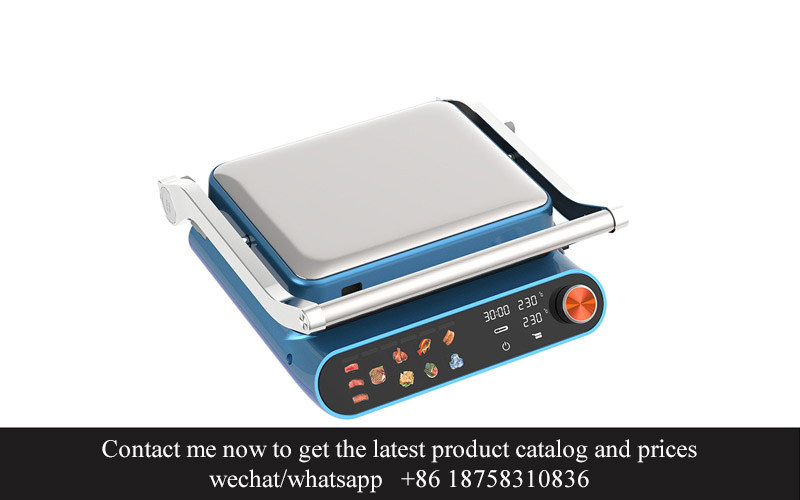
In the world of private label kitchen appliance packaging, there are several remarkable case studies that showcase the effectiveness of innovative design and strategic branding. Let’s delve into a few that have stood out in the market.
The sleek, minimalist design of the “EcoGlide” series by GreenHome Appliances. This line of kitchen appliances was packaged in a way that emphasizes sustainability without compromising on style. The boxes were crafted from recycled materials, and the design featured earthy tones that echoed the eco-friendly ethos of the brand. The result was a packaging that not only protected the appliances but also communicated the brand’s commitment to the environment.
The playful and vibrant packaging of the “Culinary Creations” line from KitchenJoy. Targeting a younger demographic, the packaging for these appliances was a blend of fun and functionality. The use of bold colors and playful illustrations on the boxes drew the eye and appealed to the aesthetic sensibilities of the target audience. Additionally, the packaging was designed to be easily recyclable, ensuring that the brand’s eco-friendly message was consistent throughout the customer experience.
The “Classic Cuisine” collection by Homestyle Appliances stands out for its elegant and timeless packaging. The design of these appliances’ boxes pays homage to the classic kitchen aesthetics while incorporating modern elements. The packaging is adorned with a rich, deep brown hue that suggests quality and durability. The inclusion of a “Made in Italy” label adds a touch of luxury, reinforcing the brand’s association with craftsmanship and premium quality.
The “SmartChef” series from TechGourmet showcases the intersection of technology and packaging design. The appliances are packaged in sleek, transparent cases that allow customers to see the product’s sleek design and advanced features. The packaging also includes interactive elements, such as QR codes that provide recipes and tips for using the appliances. This approach not only enhances the customer’s understanding of the product but also encourages engagement with the brand.
The “Urban Chef” line by Urban Kitchen Appliances presents a unique challenge in packaging design, as it targets urban dwellers with limited space. The packaging for these appliances is compact and space-saving, designed to be easily stored. The boxes themselves are flat-packed and can be assembled like a puzzle, reducing waste and encouraging customers to get involved in the unpacking process. This hands-on approach creates a memorable and interactive experience.
The “Healthy Living” brand, which offers a range of kitchen appliances designed for health-conscious consumers, has packaging that reflects its core values. The boxes are made from biodegradable materials and are printed with eco-friendly inks. The design is clean and simple, highlighting the brand’s commitment to health and wellness. The packaging also includes educational content about the benefits of each appliance, reinforcing the brand’s message and building trust with the consumer.
The “Artisan Kitchen” series by Artisan Appliances combines the craftsmanship of handmade goods with the convenience of modern appliances. The packaging for these products is a blend of rustic and contemporary styles, featuring natural textures and earthy colors. The boxes are adorned with intricate patterns that mimic traditional craftsmanship, while still being functional and protective. This approach to packaging not only showcases the brand’s values but also sets it apart as a premium choice in the market.
These case studies highlight the importance of packaging in the private label kitchen appliance industry. By combining functionality, aesthetics, and brand messaging, these companies have successfully captured the attention and loyalty of consumers. Whether it’s through sustainability, interactive design, or a nod to tradition, the packaging of private label kitchen appliances plays a crucial role in shaping consumer perception and fostering brand loyalty.
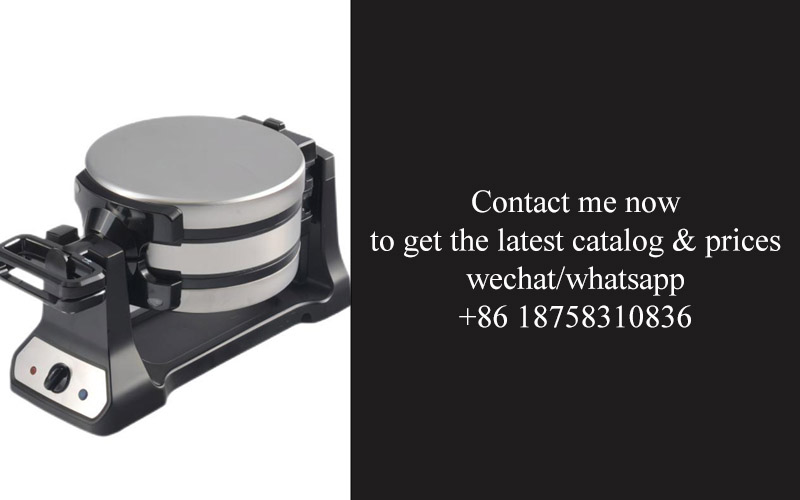
In today’s rapidly evolving market, private label kitchen appliance packaging is not just about protecting the product—it’s a canvas for brands to make a statement. Here’s a glimpse into the future of this sector, highlighting trends and predictions that are shaping the landscape.
Packaging materials are increasingly becoming the focal point for innovation. As consumers grow more environmentally conscious, there’s a shift towards sustainable options. Biodegradable plastics, recycled materials, and plant-based alternatives are not just buzzwords; they’re becoming the norm. This shift not only aligns with consumer values but also reduces the carbon footprint of these products.
Personalization is on the rise, and it’s not just about customizing the product itself. Packaging can now cater to individual preferences, offering a more tailored experience. Smart packaging, which incorporates technology like QR codes or augmented reality, allows customers to interact with the product in new ways. Imagine opening a kitchen appliance box and scanning a code to receive a tutorial on how to use the appliance effectively.
Brand storytelling through packaging is becoming more sophisticated. Instead of just displaying logos and product information, packaging is now a tool for conveying a brand’s story and values. This narrative-driven approach helps create an emotional connection with the consumer, fostering brand loyalty. Companies are investing in premium packaging materials and design to reflect their brand’s premium positioning, even in the private label market.
Sustainability is not just about the materials used but also about the packaging’s lifecycle. Companies are exploring ways to make their packaging more durable and reusable, reducing the need for single-use items. Think of appliances arriving in boxes that can be repurposed as storage bins or planters once the product is removed. This kind of packaging design encourages a longer shelf life and a reduced waste footprint.
The integration of e-commerce into the kitchen appliance market has spurred new packaging trends. Compact and lightweight packaging is becoming more common to facilitate easy shipping and reduce transportation costs. Additionally, packaging that is easy to recycle or compost at home is favored, as it aligns with the on-demand, eco-conscious consumer mindset.
Interactive packaging is another area poised for growth. Imagine a kitchen appliance that not only protects the product but also educates the user. Sensors embedded in the packaging could monitor the appliance’s performance and even alert the user to maintenance needs or updates. This kind of smart packaging could become a key differentiator for private label brands looking to compete with established names.
As technology advances, we can expect to see an increase in the use of augmented reality (AR) in packaging. AR can transform the unboxing experience into an interactive journey, where consumers can visualize the appliance in their kitchen or learn about its features in an engaging way. This could be particularly appealing to younger demographics who are accustomed to digital interactions.
Predictions for the future of private label kitchen appliance packaging also include a greater emphasis on localization. As global brands continue to expand into new markets, packaging will need to adapt to local regulations, cultural preferences, and sustainability standards. This could lead to a diverse range of packaging solutions, each tailored to specific consumer needs.
In conclusion, the future of private label kitchen appliance packaging is a blend of sustainability, technology, and personalization. It’s a landscape where the packaging itself becomes a part of the product experience, telling a story, educating users, and reducing the environmental impact. As consumers become more discerning, these packaging trends and predictions will play a crucial role in shaping the success of private label brands in the kitchen appliance industry.
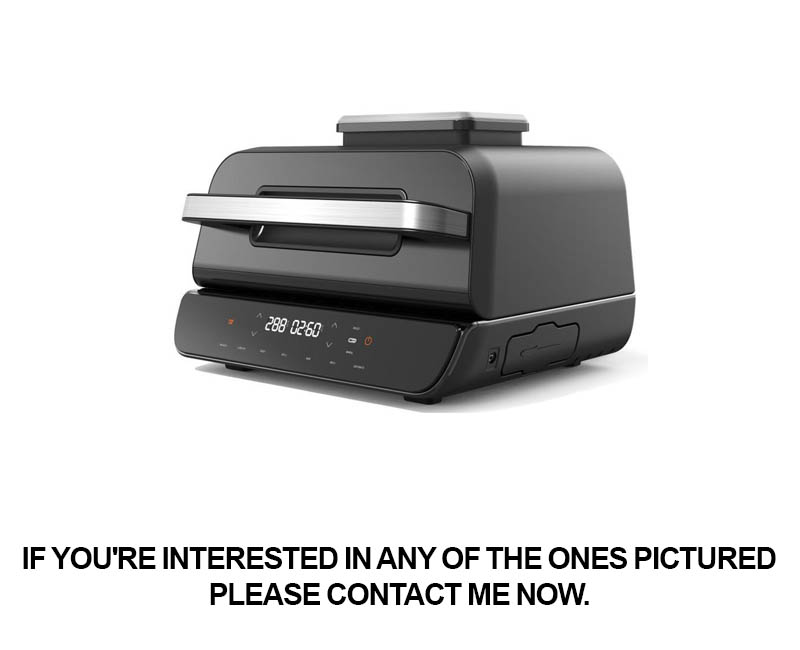
In the ever-evolving landscape of kitchen appliance packaging, private label brands are carving out a significant niche. The packaging of these products plays a pivotal role in shaping consumer perceptions and fostering brand loyalty. Let’s delve into the multifaceted impact of packaging on these aspects.
Packaging is not just a protective barrier for kitchen appliances; it’s a silent salesperson that communicates the brand’s values and promises. A sleek, modern design can evoke a sense of quality and innovation, while a minimalist approach might suggest simplicity and eco-consciousness. The materials used, the color schemes, and the overall presentation all contribute to the first impression a consumer has of the product.
Consumers today are more environmentally aware than ever before. Eco-friendly packaging is not just a trend; it’s a reflection of a brand’s commitment to sustainability. By choosing recycled materials, biodegradable options, or reducing the use of plastics, private label brands can appeal to eco-conscious consumers who are looking for more sustainable alternatives. This shift in consumer preference is influencing the packaging strategies of many brands.
Brand loyalty is often influenced by the perceived value of a product, and packaging plays a crucial role in this perception. A well-designed package can enhance the user experience by providing clear instructions, ensuring product safety, and offering convenience. For instance, innovative packaging solutions that make it easier to store or transport kitchen appliances can significantly boost customer satisfaction and, in turn, loyalty.
The emotional connection a consumer has with a brand is also shaped by packaging. A package that resonates with the consumer’s values or interests can create a stronger bond. This is why many brands are incorporating elements that reflect their brand story or mission, such as cultural motifs or community involvement, into their packaging design.
In the realm of private label kitchen appliance packaging, there’s a delicate balance between functionality and aesthetics. Functionality ensures that the product is protected and that the consumer can use it with ease. Aesthetics, on the other hand, draws the consumer in and encourages them to make the purchase. The challenge lies in creating packaging that is both visually appealing and practical.
One notable trend in private label kitchen appliance packaging is the integration of smart technology. As appliances become more connected and intelligent, their packaging must communicate the product’s features and capabilities effectively. This often involves clear, easy-to-understand visuals and informative graphics that highlight the appliance’s unique selling points.
Another key trend is the use of modular packaging. This approach allows for a more adaptable and space-efficient packaging solution. By designing packaging that can be easily reconfigured for different sizes or shapes of appliances, brands can reduce waste and save on shipping costs.
Case studies of successful private label kitchen appliance packaging often showcase brands that have managed to blend these trends seamlessly. For example, a brand might use sustainable materials for the packaging while also incorporating smart technology to educate consumers about the appliance’s features. The result is a package that not only looks attractive but also serves a practical purpose.
Looking ahead, the future of private label kitchen appliance packaging is poised to be shaped by several trends and predictions. One significant trend is the rise of personalized packaging. As consumers become more accustomed to customization in other areas of their lives, they may expect it in their kitchen appliances as well. Brands could offer packaging options that allow customers to choose colors, patterns, or even include their names.
Another prediction is the increased use of augmented reality (AR) in packaging. AR could be used to provide interactive product demonstrations, detailed specifications, or even maintenance tips. This would not only enhance the consumer experience but also provide a unique selling point for private label brands.
Lastly, there’s an expectation that packaging will become an even more integral part of the product lifecycle. Brands may explore circular packaging systems, where packaging is designed to be reused, repurposed, or recycled, further aligning with consumer demands for sustainability.
In conclusion, private label kitchen appliance packaging matters because it is a powerful tool in shaping consumer perception and fostering brand loyalty. It communicates a brand’s values, influences purchasing decisions, and can create an emotional connection with consumers. As the industry continues to evolve, packaging will play a crucial role in the success of private label brands, reflecting their commitment to innovation, sustainability, and customer satisfaction.